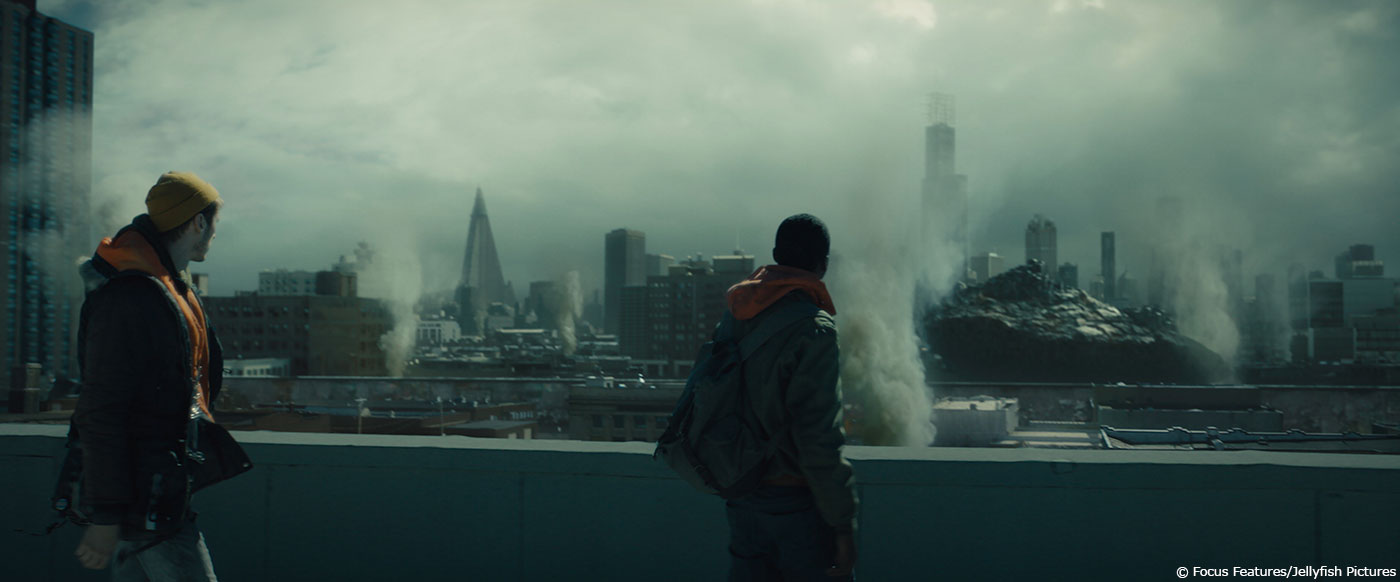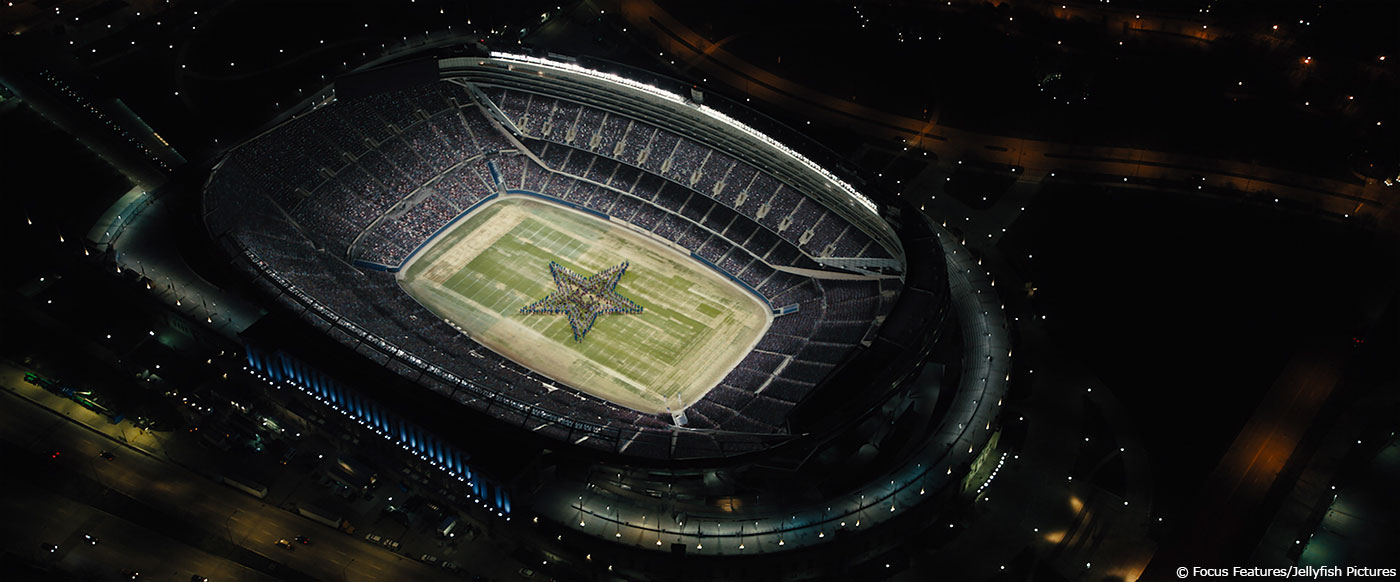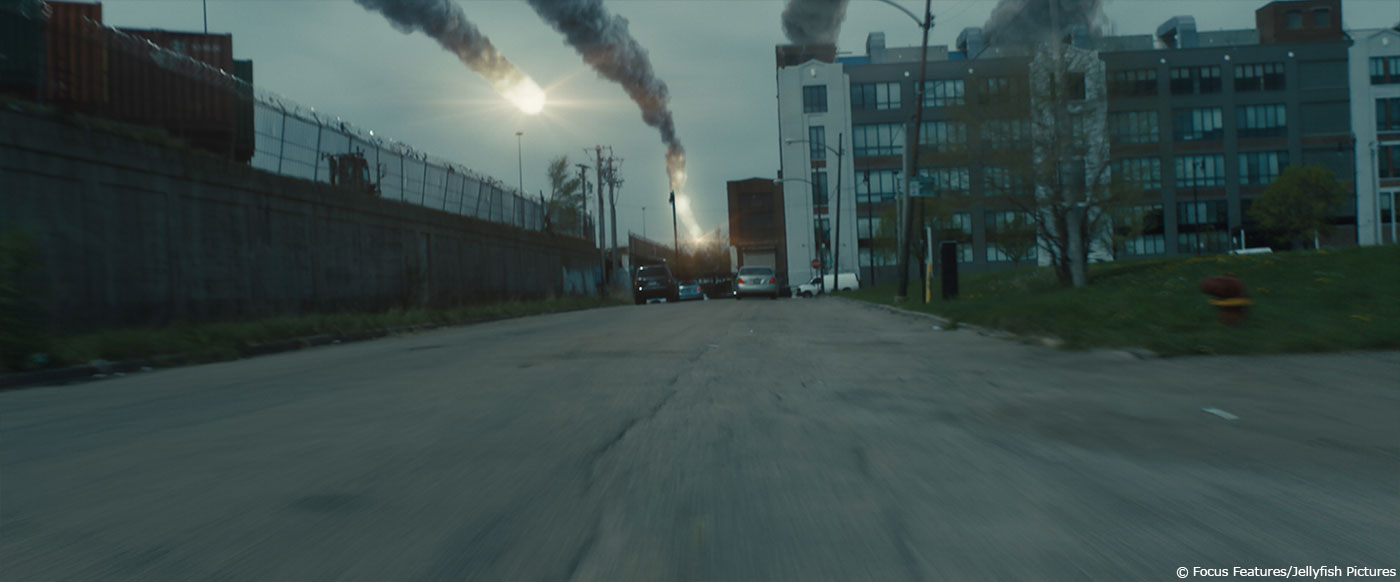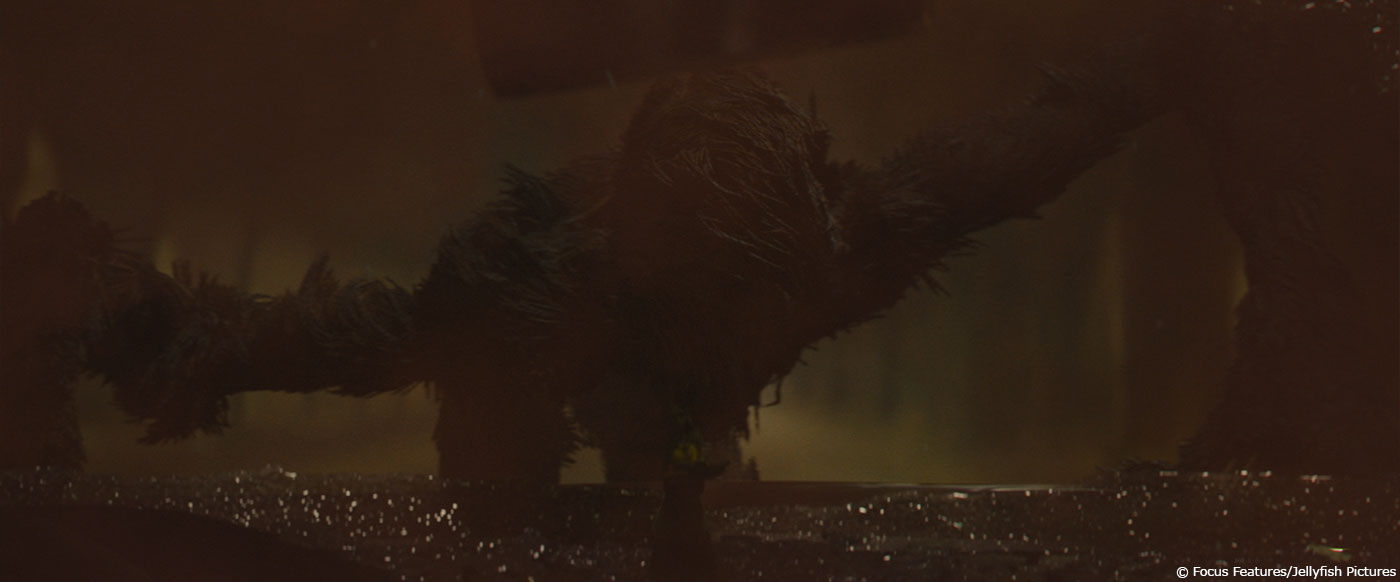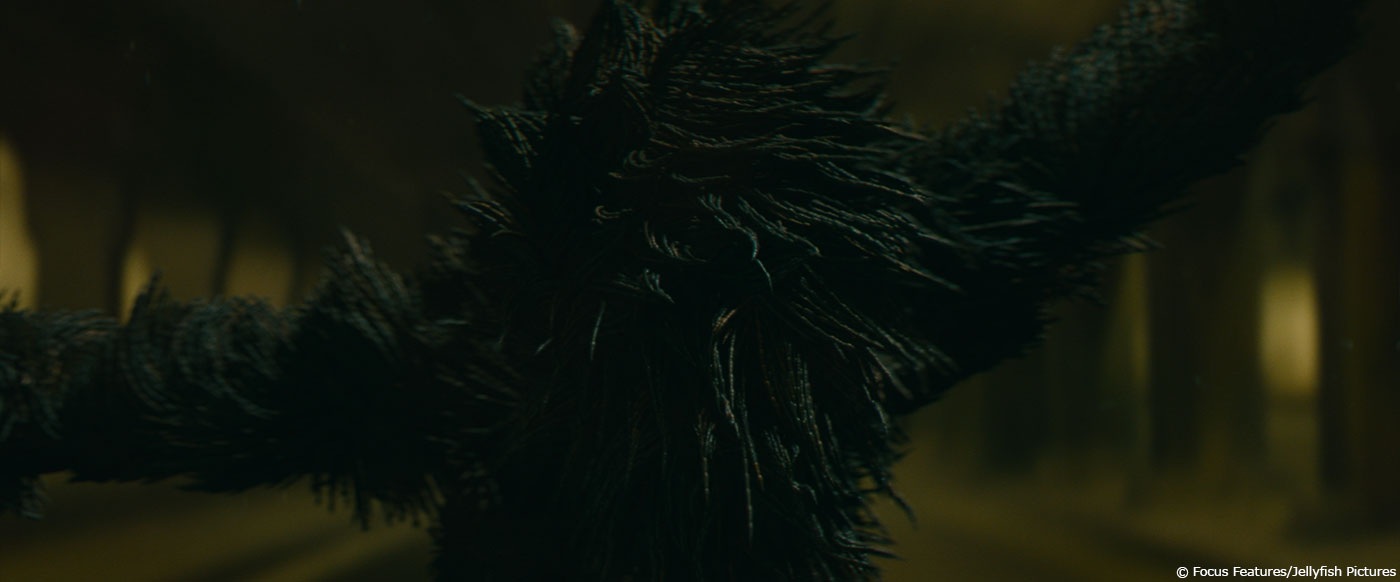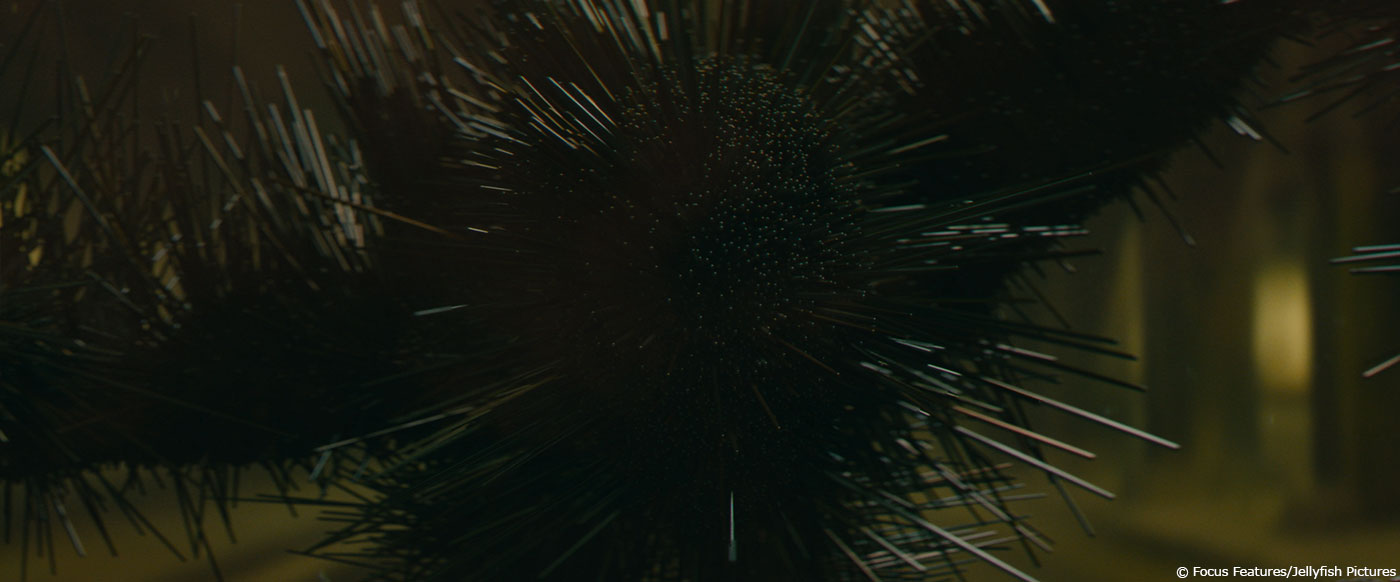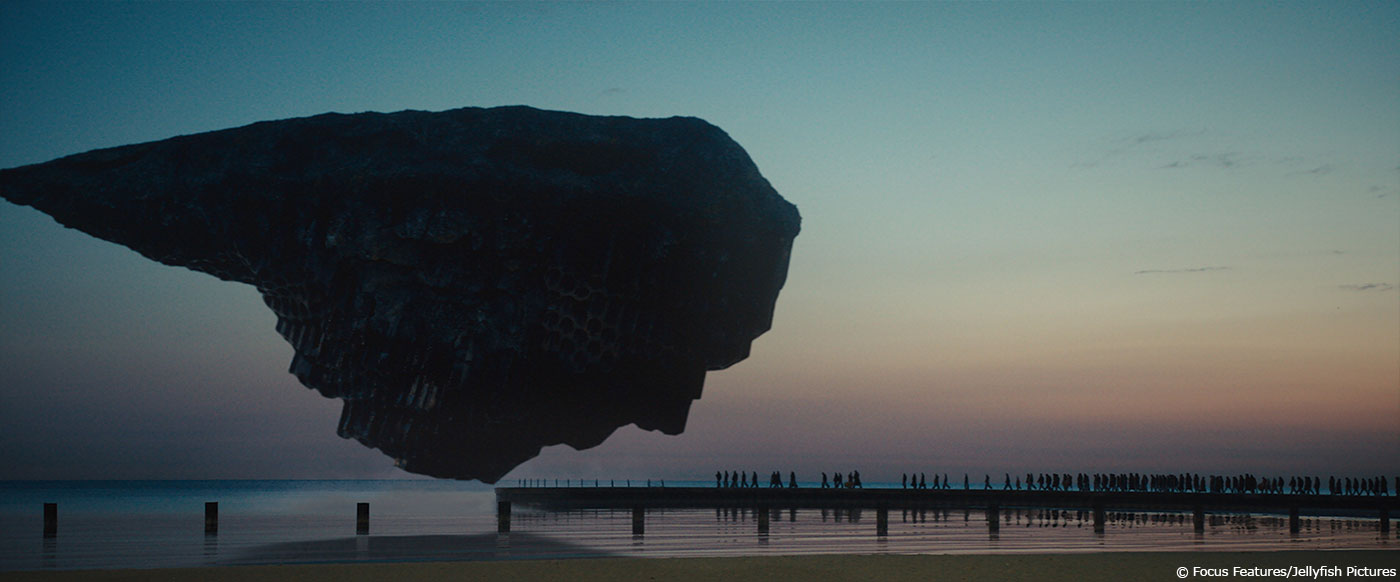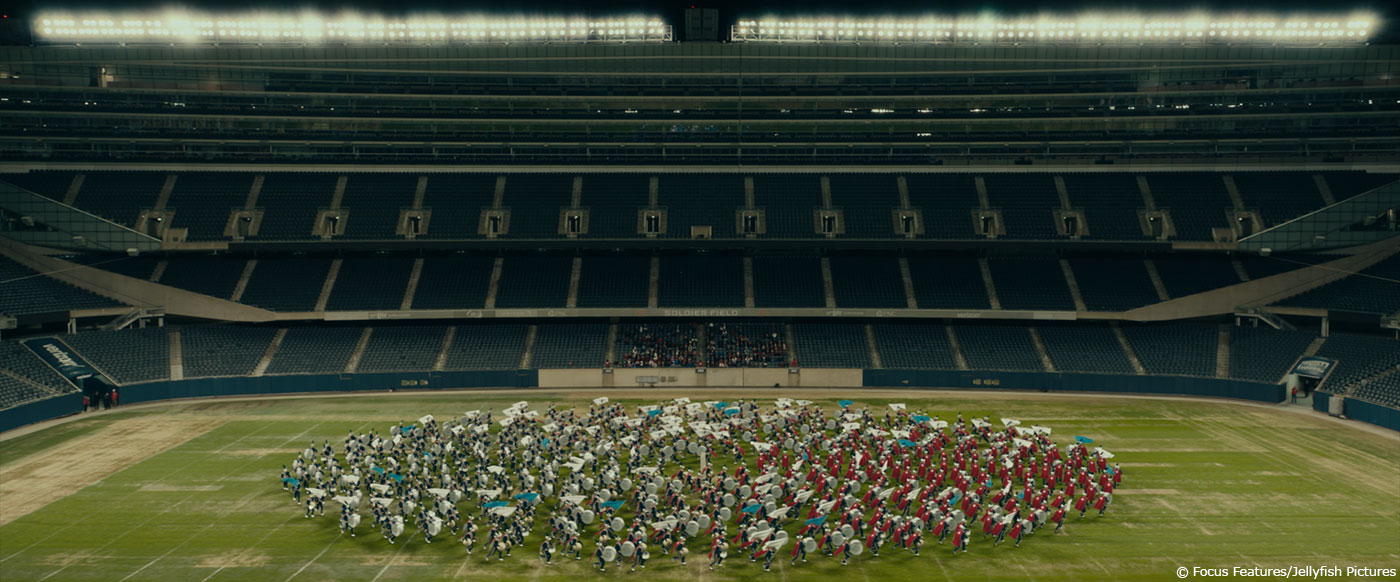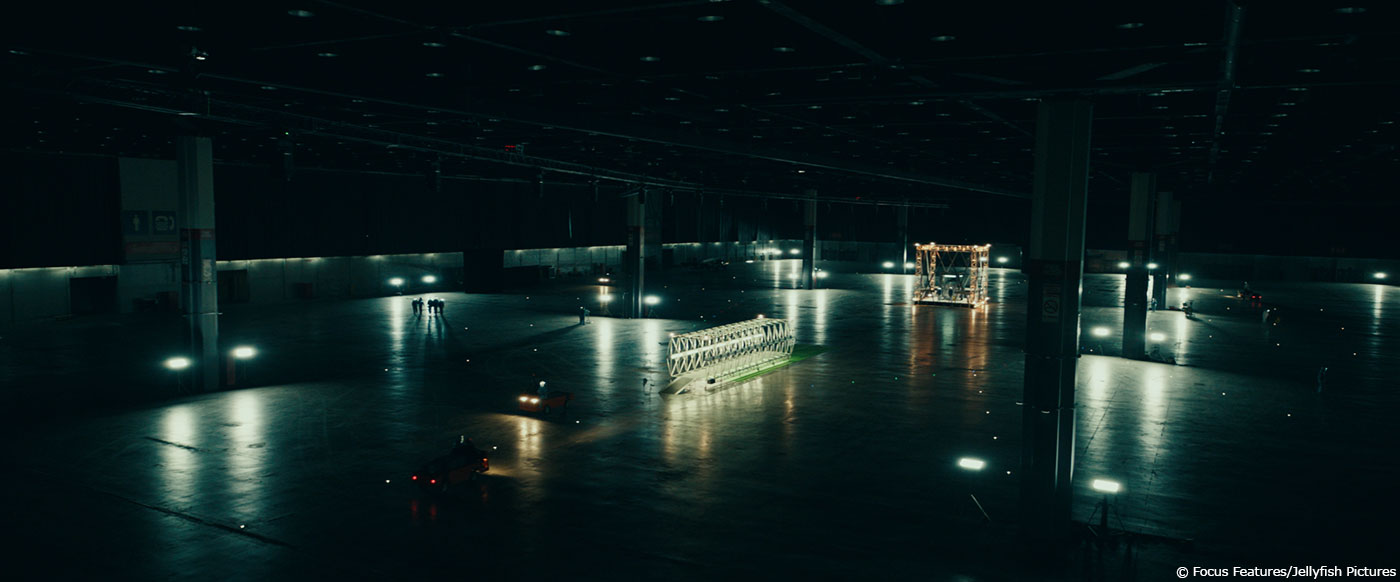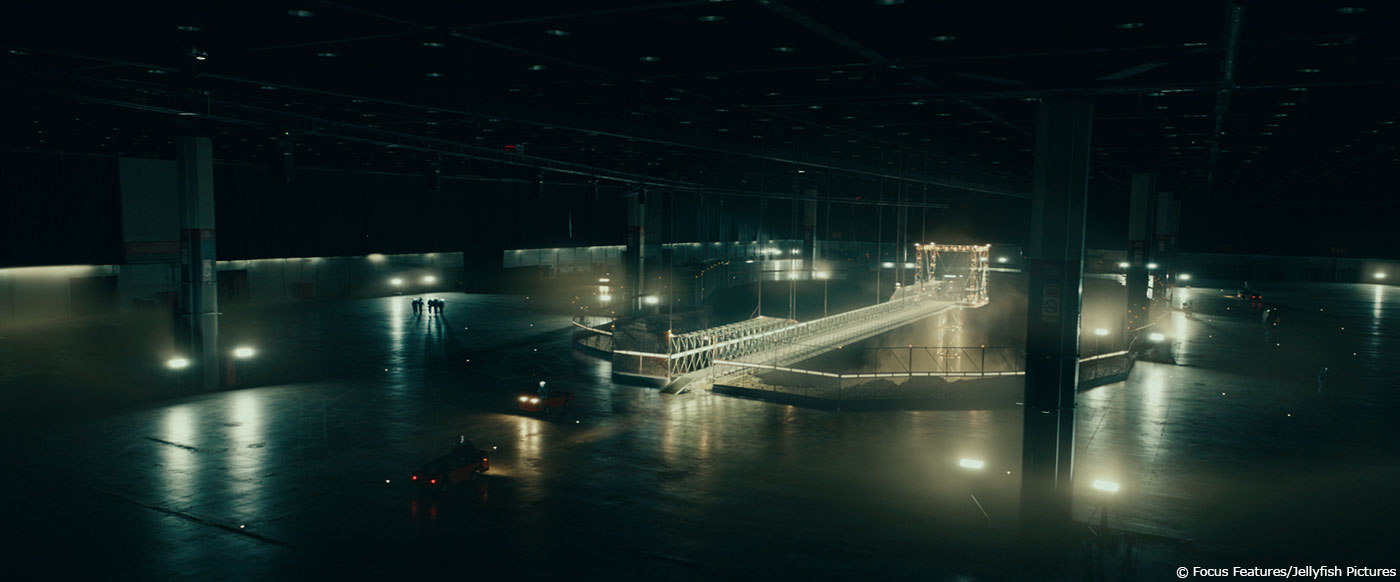After working at BBC on PLANET DINOSAUR, Tom Brass joined Jellyfish Pictures in 2011. He worked on many projects such as AMERICAN DYNASTIES: THE KENNEDYS, DEADLY DINOSAURS WITH STEVE BACKSHALL and THE INNOCENTS.
Dave Cook began his career in visual effects in 2004. He worked in many studios and then became Head of 3D at Jellyfish Pictures in 2015.
What is your background?
DC: I originally trained in Fine Art, painting huge canvasses and studying Art History. Throughout this time I supported myself working in 2D celluloid animation on various films and commercials in Soho here in London. I got into computer animation on the Amiga thanks to the wonderful late Tristan Humphries, and when Maya came along a few years later that was a logical extension for me. I started as an animator, then I did a stint of matte painting before getting into lighting and rendering.
TB: I trained in cinematography at film school and after I left I spent several years working as a cameraman and director on TV documentaries. It was incredibly fun work, but I always wanted to spend more time doing my hobby, which was writing and illustrating comics. Slowly that hobby led me into drawing storyboards and eventually animation direction. I joined Jellyfish Pictures almost ten years ago when I was working as a writer and director on the BBC series PLANET DINOSAUR.
How did you and Jellyfish Pictures get involved on this show?
DC: We met Rupert through a friendly VFX Producer. After speaking to Rupert it became apparent that Jellyfish Pictures had the flexibility needed for a shoot such as CAPTIVE STATE. We came on board in the early stages of production, initially being sent through ideas, which we developed in to concepts. At this time our VFX Supervisor, Luke Dodd travelled to Chicago for principal photography. So it all happened and kicked off quite rapidly!
How was the collaboration with director Rupert Wyatt?
TB: Rupert not only directed CAPTIVE STATE, but co-wrote the film, so he had a very clear idea of what the visual elements of the film were to bring to the table and the emotions they should evoke. It was great to have such clear direction, but also someone open to creative ideas. If we had some concepts that twisted the mythology on its head, Rupert was truly open to that, which is amazing for a Creative Director!
DC: Rupert’s success on RISE OF THE PLANET OF THE APES meant he had extensive knowledge of what VFX can and should bring to a film, as well as the work that goes in to it. It can not be underestimated the significance of working with a Director who understands. It turns the job in to true collaboration and a lot more interesting.
What was his expectations and approach about the visual effects?
TB: Rupert had a very clear vision of what he wanted. When we approached our work on CAPTIVE STATE, he needed us to help explore the back story and mythology of the film’s antagonists, the Legislators. Through this the Jellyfish Pictures art department developed a distinct design language for the Aliens, drones and ships. We wanted a look that was grounded and realistic, but also unusual, uncanny and unsettling. Everything was to be in keeping with Rupert’s aesthetic mantra ‘dirty sci-fi’. Make it detailed, make it real, but then push it into the background and keep it grounded in reality.
DC: Adding to Tom’s comments, although the visual effects were to be integrated in to the fabric of the world, this didn’t mean they required less attention. In fact, creating believable VFX, which are out of place in this world, but completely embedded in the world Rupert had created, takes a lot more attention to detail and intricacy, as say creating an all the bells and whistles explosion for example.
How did you split the work amongst you?
DC: Although Jellyfish Pictures has a departmental structure, we have lots of talented cross disciplinary people who work between departments. For instance some Matte painters also did compositing and some effects people got involved with lighting and rendering. Having the same people work across the same shot at different times in its life, ensured that the knowledge and intention was never lost. Everyone was working from the same page, enabling the movement between departments to maintain slick.
How did you organize the work with your VFX Producer?
DC: We have an ardent team at Jellyfish Pictures, many of whom we rolled from the completion of the last big project we had worked, THE LAST JEDI, so we knew their strengths very well. We worked very closely with VFX Producer Eric Pascarelli, setting out clear targets for plate turnover, elements shares, comp deliveries and final tech checks. The colour pipeline was again very similar to previous shows and updating Shotgun to work under a secure infrastructure was already in place, so we were in an excellent position to be in ready for plate ingest from day one and to go straight to matchmove.
How did you work with the art department for the creatures and the ships?
DC: The CG team worked very closely, with the art department. Having them in-house was invaluable. The concepts evolved as the film progressed, in terms of the balance of the organic and mechanical nature of the creatures and ships. We discovered some references hinting at this dual nature, such as the Giant’s Causeway. The CG team developed sculpts to support the concepts, which informed what was possible in terms of lighting, which then the art department then went back to re-concept.
TB: We worked closely with Rupert to try and realise his visions for the world of CAPTIVE STATE. The first task was to tackle the ship design. We started with moodboards collating lots of references and experimenting with different design approaches. When we hit on ideas that Rupert found exciting we would start to work elements of them into brand new designs. Every ship and creature required multiple iterations and refinements, trying out different ideas, accentuating design details and so on. Eventually this process led us to designs that were really expressive and delivered on Rupert’s vision.
Let’s talk about the creatures. Can you explain in detail about their design and their creation?
TB: Through close collaboration with Rupert, we produced multiple iterations of concepts art, design drawings and 3D sculpts and tests to develop a coherent, distinctive and detailed look. Although never explicitly revealed in the film, the Legislators are a mining species, more comfortable living in extreme conditions underground. Our ship designs drew on this idea and used the forms and textures of rock. We researched the different types of atmospheric weathering rocks can undergo and even looked at meteoric rock and all the extraordinary forms that can take. In the end we decided to use basalt rock columns – beautiful hexagonal pillars that are formed when lava cools and fractures. The strange geometric forms looks too uniform to be natural but too rough to be man-made, giving the ship design a form that appeared to be part natural and part crafted.
DC: It was important the Legislators exuded complete power, with nuances of vulnerability. This manifested itself in the ‘aliens’ wearing a full conflict armour. This armour had different modes relating to the Legislator’s emotions –a relaxed ‘hirsute’ state which is visible most of the time and a spiky ‘porcupine’ state, which is activated when they are threatened. The aliens within are only exposed at the 11th hour, revealing a frail almost decrepit being, which shows, in actuality, the Legislators’ vulnerability.
How did you handle the rigging and also their changing skin?
When creating the physical movement of the Legislators, we used a basic asymmetrical bipedal rig. The evolving requirements of the animation meant the creatures were on all fours and sometimes upright. Whilst the rig for the Legislators movement was fairly basic, the intricate work came in when looking at the fur and the way their spikes move. Our team used a heavily modified Yeti system with a lot of custom attributes that drove the grooms and transformation between states.
As previously mentioned, the true identity of the Legislators is shown at the climax of the film, when our protagonist Daniel rips the armour off of one of their faces. To achieve this we created a second model with a detachable piece and separate groom, which was shaped to be held in Daniel’s hand.
How did you create the shaders and textures for the creatures?
DC: Overall the Legislators had a dirty metallic feeling, which was created through using a mixture of procedural and custom textures. The challenge arose when addressing their spiky fur, which were themselves tapering cylinders with a metallic base shader. This meant all sense of directional lighting was lost, due to the spikes catching specularity from almost anywhere. The result was, the model looking badly integrated and too ‘furry’, leading to an almost inflated look. To overcome these issues, we introduced a more traditional three point lighting environment based on the HDR information gathered by our VFX Supervisor on set, with rigidly controlled secondary specular bounces on selected lights only. This controlled noise and preserved form. For the shots of the face we used a modified blend of skin shaders that were slightly translucent. Some organic and liquids were subtly introduced around the face and around the brows and mask as it’s ripped off.
What kind of references and indications did you receive for the creatures and their animation?
DC: The movement of the Legislators was probably one of the biggest challenges we faced on this project. It was critical to the tone of the film that these beings, who have been in society now for nine years, appeared as part of this new world, but at the same time unsettling and otherworldly. It’s tricky to achieve this ethereal sense when working with a bipedal specimen, especially avoiding over familiar horror and sci-fi tropes.
Can you explain in detail about their animation?
DC: Further putting the onus on movement was the limitations of acting and emotion these creatures could convey. They are covered in a spiky suit – so not much scope for acting! We were bound by the confines of bipedal walking, which will always have a very human feel to it. To overcome this challenge, our team of animators looked at a number of animal references, notably insects and spiders, as well as studying some human medical conditions that affect locomotion. None of these references worked on their own. Our animators then started looking at a number of contemporary dance groups. This proved quite crucial in creating the believability required for the transitions from walking on four to two legs.
How was simulate their presence on-set?
On set our VFX supervisor was present during principal photography in Chicago. He was able to shoot a great deal of reference photography for everything – including a very good HDR lighting reference using our Spheron camera.
There was a body double actor for the Legislator who wore a marked up suit for tracking and rotomation, helping us to retrieve all the relevant camera data. As mentioned, the design of the Legislators developed throughout the production. Therefore, the body double was really only useful for the eyeline of the actor interacting with the creature as the Legislator design became somewhat larger after the shoot, teamed with the fact the performance of the actor was a bit too athletic for the Legislator.
Using the fight sequence between Daniel and a Legislator as an example, although the original camera was tracked in the normal way, the set was rebuilt in layout to allow for the camera to be repositioned in 3D and then the original plate separated into ground, foreground and performer elements in Nuke. The animation needed to still reflect the cues from Daniels’ performance in the plate – hitting him and ripping off the mask – but also to suggest that mixture of hostility and weakness, by introducing a spasmodic quality to the movements.
Not only that, but the character was covered in head to toe six inch spines. This meant that he had to be painted out entirely in comp and the performance entirely reconstructed.
Can you explain in detail about the creation of the ships and the Walker?
TB: As previously mentioned, the mythology and backstory of CAPTIVE STATE is crucial in the . With the ships we wanted our designs to strike a balance between something that has been organically formed and something that has been shaped by external means. We looked at various crystalline and rock formations. Eventually we favoured ones that had a hint of geometry to them, which implied a certain ambiguity about the way that they were made and suggested a non-mechanical technology.
DC: The Walker is 60 foot fully functional tripod robot, who is eerily present throughout the film. Although called ‘Walkers’, getting them to walk was the trickiest bit! The rig required a lot of work as we had to get the three legs moving in sync. So a bespoke rig was made to imitate hydraulics and gyroscopic balancing mechanism.
The movie is full of FX. Can you tell us more about these elements?
For the flying of the drones standard bird flocking and murmuration reference worked well in wider shots, but when closer, where we needed more specific intention, they were closer to mechanical flying in nature. The limpet sucker was created after looking at reference of various cephalopods and gastropods.
How did you create the mysterious giant static robots?
DC: They are all digital matte paintings as they are static.
There is a big ceremony on a stadium. How did you create the stadium and the crowd?
DC: The stadium was filmed at Chicago’s Soldier Field from a helicopter. For this sequence, we worked on the performers in the middle of the field. We digitally recreated the small number of performers physically there in 3D to make it seem the parade was 10 times the size.
Can you explain in detail about the creation and animation of the transparent explosive device?
DC: In the world of CAPTIVE STATE, the bombs are made from an alien technology, which has a chameleon like property to blend into what they are sitting on. This was difficult to conceptualise as we were trying to create something that was neither transparent or refracted. From a shader point of view there was no physical shader model that could represent this. Using a lot of brain power and a very subtle orchestrated blend of refraction, specularity and 2D distortion warping we were able to achieve the final result.
How did you create the various environments?
DC: One of the biggest environments we worked on was the Legislators lair. This involved a big matte painting job of the sink hole, seen in our breakdown reel when Mulligan (John Goodman) walks across the bridge. Our VFX supervisor was there on set during shoot to ensure we had all the correct information. Through matte painting we enhanced the environment with a 3D extension of the set. This was also when the cross disciplinary talents of our team was utilised, with artists working on the scene from 3D, matte painting to compositing.
Another key environment for us was the landing shot of the Legislators’ ships at Soldier Field. We digitally replaced trees and inserted atmospheric dust for when the ship lands. This was all done in Maya and Houdini.
What was the most surprising thing that happens to you during the shooting or the post?
DC: For me the most surprising, and joyful, thing in this job is coming up against new challenges. In CAPTIVE STATE achieving an original look and movement for the creatures, which didn’t draw from immediate references to existing Sci-fi and fantasy creatures of the past, was surprisingly difficult.
Which sequence or shot was the most challenging?
DC: One of the most challenging sequences was definitely the fight sequence between a Legislator and our protagonist Daniel. The challenge lay in trying to express intention and emotion in a creature that has no face. It is in this pivotal scene the Legislators are revealed to be not just one dimensional beings, but both vulnerable and powerful.
Is there something specific that gives you some really short nights?
DC: The bombs. When asked to produce something that doesn’t obey the laws of physics, which is essentially the cornerstone of VFX, that leads to lots of late nights. Although it was great to flex the brain muscles and come up with lots of different solutions to a seemingly impossible task.
What is your favorite shot or sequence?
DC: For me is has to be when the Legislators emerge from the ship upon landing at Soldier Field. This is the first time the audience sees the ship, and the feeling of oppression and tension is intoxicating. Initially it was going to be a wider shot, but eventually it came in to a much closer one, enabling the audience to actually see and take in the magnitude of these creatures. An exciting moment.
TB: I would pick the same shot as Dave. It’s a very powerful moment and I’m especially attached to it as I pitched the animation performance to Rupert by acting it out in his edit suite!
What is your best memory on this show?
DC: The great attitude of the crew, who maintained creativity and patience, throughout the project even when required to revisit shots they had worked on multiple times.
TB: It was wonderful to spend several weeks with Rupert and the crew at his post production base in Hudson NY. We were able to really dive into the emotional intention of every shot and that face to face time was essential to delivering good work.
How long have you worked on this show?
DC: From shoot to final delivery we were probably all in for about 14 months.
What’s the VFX shots count?
DC: We worked on approximately 120, which predominantly were all CG.
What was the size of your team?
DC: All in all we had about 40 working across all departments.
What is your next project?
DC: Sorry to be disappointing, but unfortunately we can’t really talk about the projects we have in production at the moment. But I can promise you it’s all very exciting, across our visual effects, long form animation and our visual development departments.
What are the four movies that gave you the passion for cinema?
DC: 2001, YOJIMBO, CHELSEA GIRLS and MARY POPPINS.
TB: SOME LIKE IT HOT, THE BIG LEBOWSKI, LABYRINTH and DUNE (The David Lynch version, of course.)
A big thanks for your time.
CAPTIVE STATE – VFX BREAKDOWN – JELLYFISH PICTURES
WANT TO KNOW MORE?
Jellyfish Pictures: Dedicated page about CAPTIVE STATE on Jellyfish Pictures website.
© Vincent Frei – The Art of VFX – 2019

